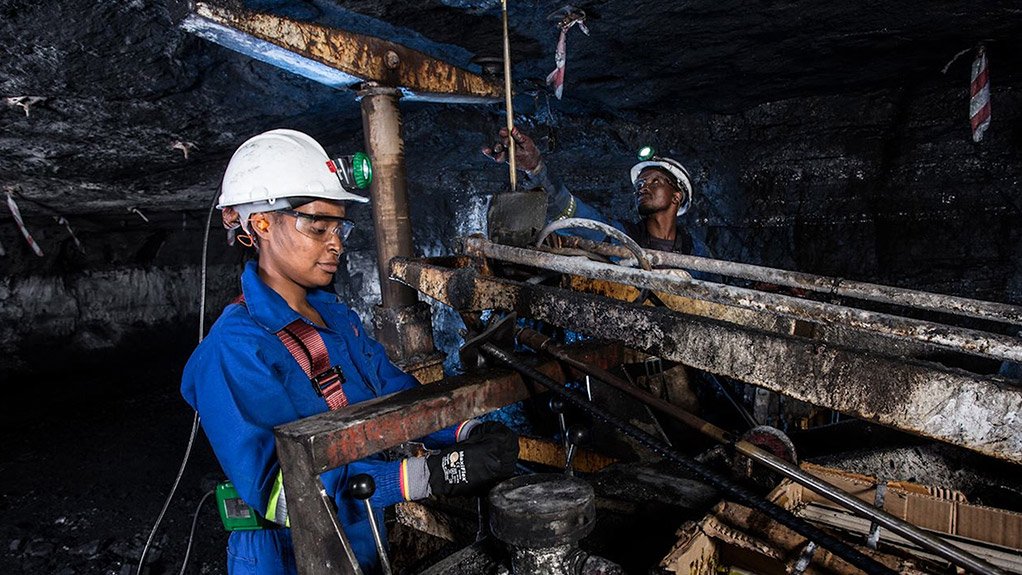TORONTO (miningweekly.com) – With its baby boomer cohorts retiring in greater numbers, Canada’s mining industry has faced a slow-motion demographic time bomb over recent years. Replacements with less experience are moving up the corporate chain, while entry-level graduates are increasingly reluctant to work on mine sites located in remote areas, with challenging climates.
The damage done has been obscured by the downturn, with companies happy to trim their labour rosters and offer redundancy packages to cut costs. But, the next upcycle could find the same companies struggling to maximise their productivity and returns as they compete to find the right personnel who demand higher wages.
One solution would be to increase opportunities for women, and not just in the boardroom or offices, but also at the front end of operations. To remain competitive, the mining industry must ensure its access to the widest available talent pool. Otherwise, it risks losing the best, brightest and most industrious workers to other sectors.
TOUGH TIMES
Unfortunately, cultural barriers against women joining the industry persisted, repelling many from choosing to work in mining and metals. These must be overcome, underground miner Elsa Nielsen stressed when reflecting on the failures to increase female representation through the prism of her career.
“My story represents hundreds of women across this industry who dared to try and break down stereotypes and do jobs typically done by men. My story is not unusual,” she told an audience at a recent meeting of Women in Mining’s Toronto branch.
University-educated, Nielsen started working in the industry as a serviceman, driving the drillers around and cleaning workers’ lunchrooms. She then worked as a trammer, driving underground ore trains at around C$30/h, with a production bonus of C$10/h to C$15/h. In addition, she also worked as a scoop operator and truck driver.
Several colleagues and workmates were at first bemused at Nielsen’s presence, with some asking what her husband might think. “I was the only woman on my crew and, during my first month underground, I was [also] asked countless times if I was a lesbian or if I was barren and unable to have children,” she noted.
The job of a narrow-vein driller was the most prestigious job at the mine, with pay levels reflecting the skills involved at around C$36/h to C$46/h, plus a production bonus of between C$30/h and C$70/h.
“However, it’s a physical job and you have to use a jackleg that’s heavy at about 150 lb [68 kg],” she noted. “When I tried to transition from equipment operator to driller . . . that’s when I started experiencing some resistance [on the frontline].”
Despite proving herself strong enough to work underground, Nielsen was repeatedly given physical tasks other male counterparts were never asked to perform. She then witnessed less-experienced male colleagues being fast-tracked to become drillers as her own appeal for advancement was rebuffed.
SCALING THE WALLS
After several requests, Nielsen was eventually given preliminary training at drilling and discovered the tasks involved met her expectations. But there appeared no interest in training her for the coveted position of driller.
She entered a local jackleg competition in a bid to prove her abilities. “For the first time in the history of mining in Timmins a woman was asked to compete with the men. I placed seventh out of 16 drillers that day, which means that with a small bit of training, and being strong enough, I beat more than half the men who drilled professionally every day for a living.”
While those around her were impressed, Nielsen was informed she still required more training in her current position. This was the final straw and she approached her company’s human resources department armed with work diaries, having kept note of frustrations and insults.
“I threatened to file a complaint of gender discrimination with the human rights tribunal,” she said. “The people at human resources were appalled and said all the right things: they apologised; made promises and assurances; called on staff members to discuss the problems; and they even drew up a plan to follow through with my training and placement.”
Unfortunately, Nielsen was then paired with an inappropriate drill partner. “He once said: ‘I’m waiting for you to either get hurt or give up’.” But she persevered, refused to give up and received her certification.
Her next drill partner was a colleague who treated her as an equal, passing on his invaluable knowledge and experience. It had taken several years to achieve her goal: to become an accepted, productive miner.
BREAKING THE BARRIERS
Nielsen considered the solutions needed to ensure experiences like hers become a thing of the past. The creation of a liaison officer/advocate to monitor women’s progress at mine sites and report back to headquarters on this would be a vital step, she stressed.
In turn, those at the corporate level must ensure problems are dealt with speedily and efficiently when they arise. “Many frontline supervision and training departments are not held accountable. They are making decisions and promoting in their own image because of an unconscious bias and we should change that,” she said.
Buzzwords and jargon must also be jettisoned and replaced with a firm understanding of realities on the ground. For example, telling employees to network when their jobs might involve solitary working conditions was of limited use.
In addition, the practicalities for women working underground also needed to be considered, which included basic issues such as installing female toilets near frontline operations.
Like it or not, the pace of change in the mining sector has become rapid; the miner of the future must be smarter, better educated and more innovative than those of today and yesteryear. Failure to consider women as potential candidates could only disadvantage an industry where every ounce of competitiveness counts as never before.
Edited by: Henry Lazenby
Creamer Media Deputy Editor: North America
EMAIL THIS ARTICLE SAVE THIS ARTICLE
To subscribe email subscriptions@creamermedia.co.za or click here
To advertise email advertising@creamermedia.co.za or click here













